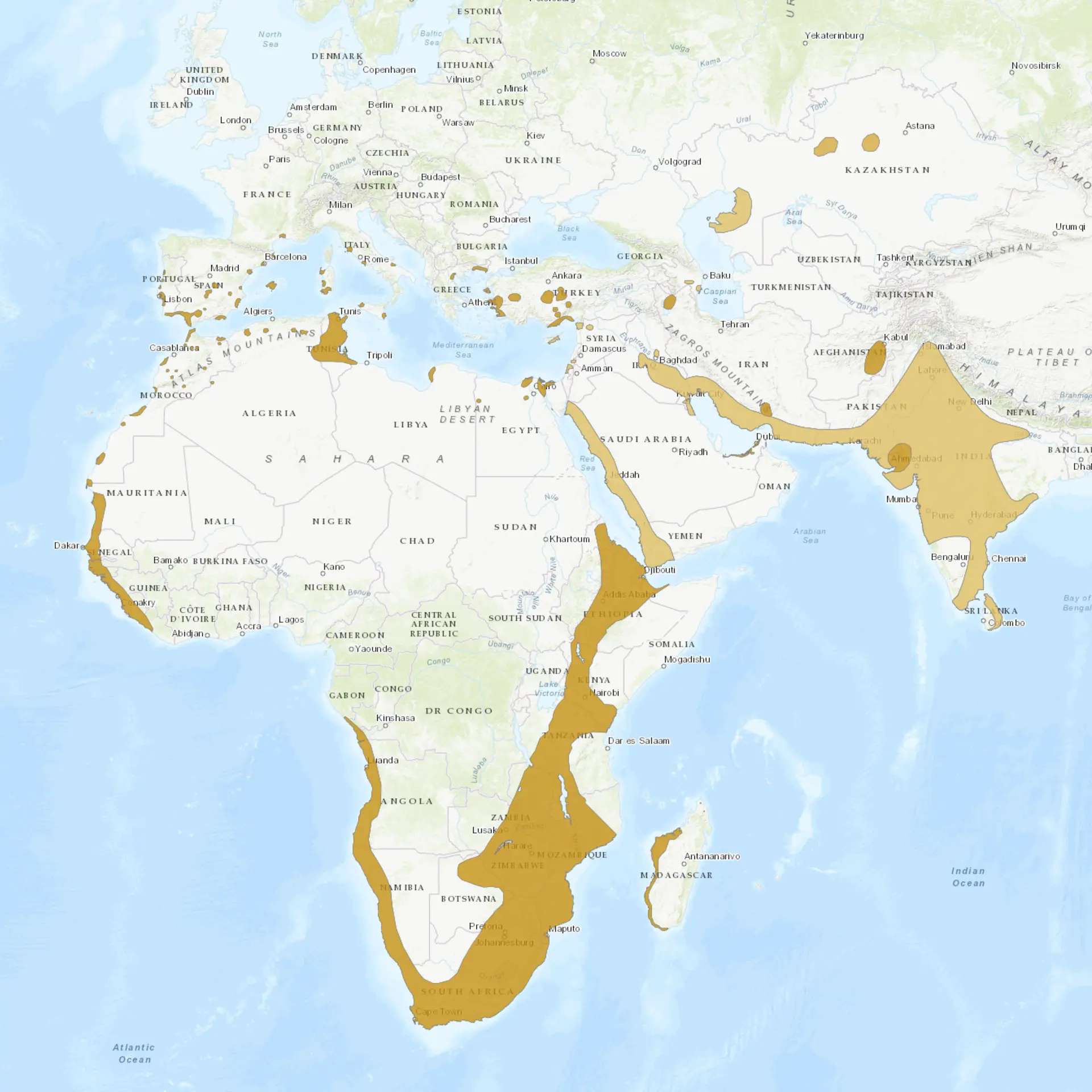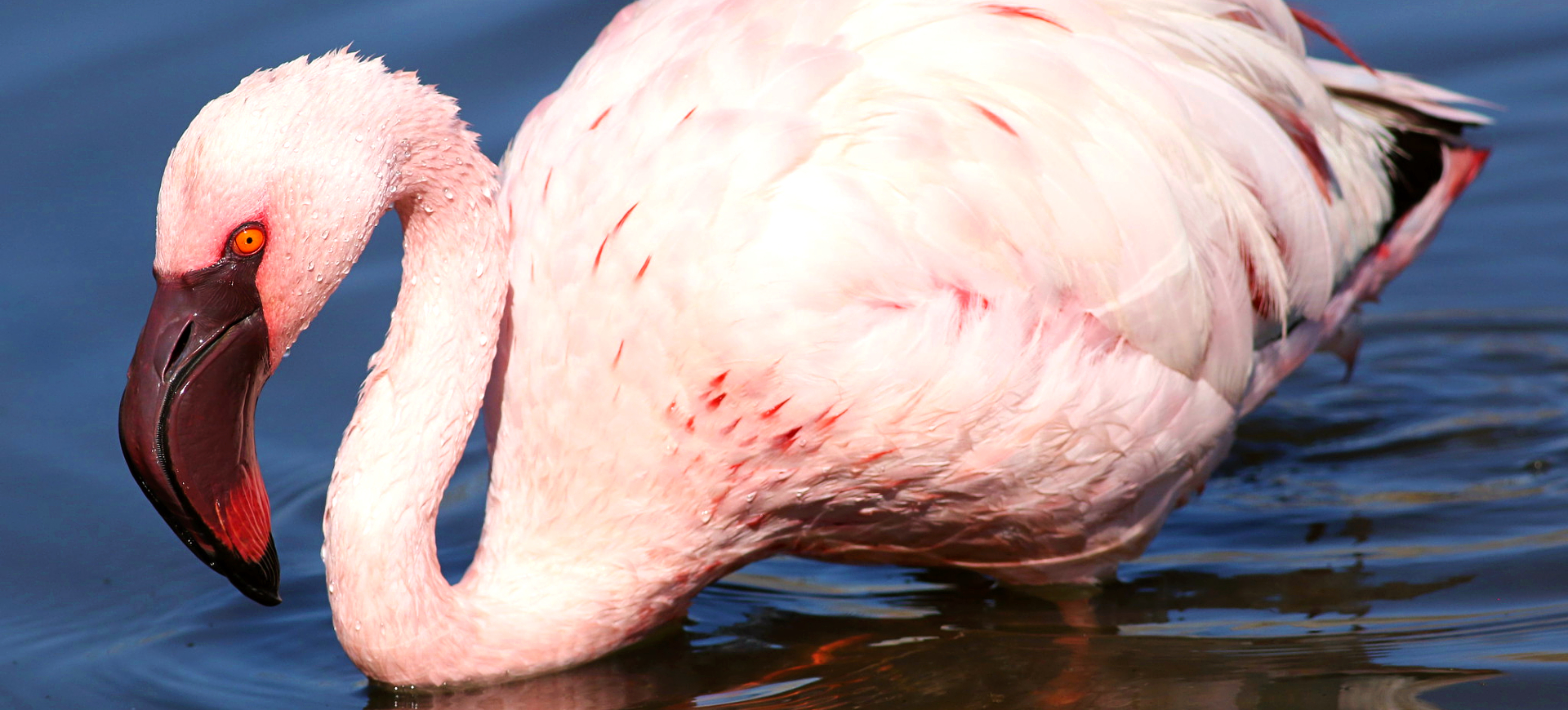Overview
The Greater Flamingo is a large and visually striking bird known for its unique pink coloration, long, slender neck, and spindly legs. This bird is the flamingo family’s largest and most widespread species, a trait reflected in its name. Greater flamingos are highly social animals often seen living in large colonies that can include thousands of individuals. These colonies protect from predators and aid in successful breeding.
These fascinating birds have a unique feeding style; they stir up mud and silt with their feet and filter feed by holding their curved beak upside down in the water. They are known to consume a diet rich in carotenoid pigments, which give their feathers the iconic pink hue. Greater Flamingos display impressive mating rituals that involve synchronized group displays, with the birds stretching their necks upwards, uttering calls while waving their heads, and flapping their wings.
Greater Flamingos are highly adaptable and can live in varied environments, ranging from the edges of lakes, lagoons, and swamps to mangrove forests and sandy islands in the middle of salt pans. Their range spans parts of Africa, southern Europe, the Middle East, and the Indian subcontinent. In terms of conservation, while the greater flamingo is not currently endangered, it faces threats that could potentially harm its population, including habitat loss and pollution.
Taxonomy
Kingdom
Phylum
Class
Order
Family
Genus
Species
Type
Current distribution:
The Greater flamingo is found across a wide geographic range, including southern Europe, Africa, the Middle East, and parts of South Asia. Major populations occur in wetlands across countries such as Spain, Turkey, India, and coastal regions of Africa. They are also in isolated locations, such as the Makgadikgadi Pans in Botswana and the Rann of Kutch in India. Seasonal migrations occur in some populations, driven by water availability and food resource changes.
While the species is widely distributed, localized declines have been observed due to habitat loss and degradation. Protected areas, such as the Camargue in France and Lake Nakuru in Kenya, are vital in sustaining key populations. Despite some regional challenges, the overall population remains stable, supported by the bird's ability to adapt to various wetland habitats. Conservation initiatives have been critical in maintaining the species’ distribution and numbers.
Physical Description:
Greater flamingos are characterized by their unique pink coloration, which ranges from pale pink to a more vibrant rose color. Their color is more concentrated in their plumage and less intense on their long, slender necks and legs. This unique pink color results from carotenoid pigments found in the food they eat, including shrimp, algae, and small crustaceans.
An adult Greater Flamingo stands at an impressive height, supported by elongated, stilt-like legs. The legs are pale pink with joints in contrasting deep pink. The birds have a large, curved beak designed for filter-feeding, with the lower part bright pink and the upper part black. Their large, round eyes are yellowish-orange. The wings are broad and long, with black primary and secondary feathers providing a stunning contrast to the rest of the body when the wings are open.

Lifespan: Wild: ~30 Years || Captivity: ~50 Years

Weight: Male: 6.2–8.8 lbs (2.8–4.0 kg) || Female: 5.5–7.7 lbs (2.5–3.5 kg)

Length: Male: 43–59 in (110–150 cm) || Female: 39–55 in (100–140 cm)

Height: Male: 43–59 in (110–150 cm) || Female: 39–55 in (100–140 cm)

Wingspan: Male & Female: 55–65 in (140–165 cm)

Top Speed: 37 mph (60 km/h)
Characteristic:
Native Habitat:
Greater Flamingos inhabit a wide variety of water bodies, including both saltwater and freshwater environments. They are often found in shallow coastal lagoons, mudflats, marshes, and alkaline or saline lakes. They generally avoid areas with dense vegetation or extensive tree cover, preferring open environments where they can spot potential predators.
The birds show remarkable adaptability to a range of harsh environments. In Africa, they can be found in the alkaline lakes of the Great Rift Valley, while in India, they occupy coastal mudflats, and in parts of Europe and the Middle East, they can be found in coastal and inland salt pans. Their diverse habitats showcase their tolerance to a range of climatic conditions.
Biomes:
WWF Biomes:
Biogeographical Realms:
Countries:
Diet:
Diet & Feeding Habits:
Greater flamingos are filter feeders, which means they consume their food by filtering water through their beaks. Their diet primarily consists of algae, diatoms, and small aquatic invertebrates such as brine shrimp and mollusks, rich in carotenoids. These are the pigments that give the flamingos their distinctive pink color.
They have a specialized beak, which is bent in the middle, that they use for feeding. The beak has a complex array of plates called lamellae, which filter food particles from water. When feeding, a flamingo dips its beak upside down and pumps water in and out with its tongue, trapping food particles in the lamellae.
Mating Behavior:
Mating Description:
Greater flamingos are monogamous birds, meaning they pair for life. Their breeding season varies depending on the location and the availability of food. Breeding can occur at any time of the year and is triggered by rainfall leading to an increase in the food supply.
Courtship rituals are communal and involve a lot of synchronized group displays, where the birds stretch their necks upwards, make calls while vigorously waving their heads, and flap their wings. Males and females build a nest together, a mound of mud with a concave top, where a single chalky-white egg is laid.
Reproduction Season:
Birth Type:
Pregnancy Duration:
Female Name:
Male Name:
Baby Name:
Social Structure Description:
Greater Flamingos are highly social birds living in large colonies consisting of thousands of individuals. This colonial lifestyle helps them protect each other from predators and increases their chances of successful breeding. These colonies establish a social hierarchy based on size, with larger individuals often dominating smaller ones.
The birds communicate with each other through a series of vocalizations and body displays. For instance, head-flagging (waving the head from side to side) is common. Flamingos also preen each other, which helps strengthen social bonds. Flamingos participate in synchronized displays during the breeding season to attract a mate.
Groups:
Conservation Status:
Population Trend:
Despite their wide distribution, Greater Flamingos face threats that could impact their population. Habitat loss due to human activity, including agriculture and urban development, is a significant threat. Pollution of water bodies, their feeding, and nesting sites can also negatively affect them.
While the global population appears stable, and the IUCN has categorized the Greater Flamingo as the Least Concern, some local populations have shown signs of decline. For example, the population in parts of West Africa has significantly decreased due to habitat degradation.
Population Threats:
The primary threats to the Greater Flamingo population include habitat loss and degradation, pollution, and disturbance from tourism. In some regions, flamingos are hunted for their meat and eggs. Global climate change can also affect the feeding habitats of these birds by altering water levels and salinity.
Greater Flamingos are sensitive to environmental changes, and fluctuations in their food supply can lead to breeding failures. Disturbances at their breeding sites can lead to the abandonment of nests and the loss of chicks. Pesticides and heavy metals in their food and water can also impact their health and reproductive success.
Conservation Efforts:
Conservation efforts for the Greater Flamingo involve habitat preservation, pollution control, and managing human interactions. These include protecting their nesting sites from human disturbances and implementing measures to reduce pollution in their feeding habitats. Some areas have implemented legislation to prevent hunting.
Greater Flamingos are also part of various captive breeding programs, which aim to maintain a healthy captive population and, if needed, reintroduce birds to the wild. Environmental education and public awareness campaigns are being carried out to raise awareness about the threats faced by these birds and the importance of conserving them.
Additional Resources:
Fun Facts
- Greater Flamingos can live up to 60 years in captivity, one of the longest lifespans for a bird.
- Pigments cause the pink color of a flamingo’s feathers in their food. If their diet lacks these pigments, they can lose their color.
- They sleep standing up on one leg to conserve body heat.
- Flamingos are monogamous and pair for life. They also cooperate in parenting, with both parents incubating the egg and taking care of the chick.
- They have a unique feeding style where they stir up the mud, then suck water through their bills and filter out the food.
- The flamingo’s beak is designed upside-down, which makes it easier for them to eat when their head is underwater.
- Flamingos are good flyers and can reach a speed of 37 mph.
- A group of flamingos is called a “flamboyance.”
- They are the national bird of the Bahamas.
- Greater flamingos are the largest species of flamingo, standing up to 59 inches tall.













